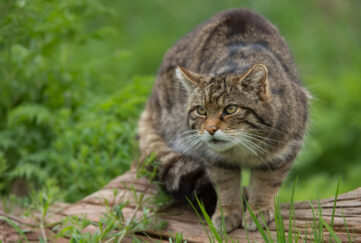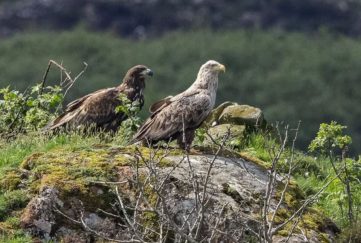Revisiting The Fox And Hare Bill – Jim Crumley
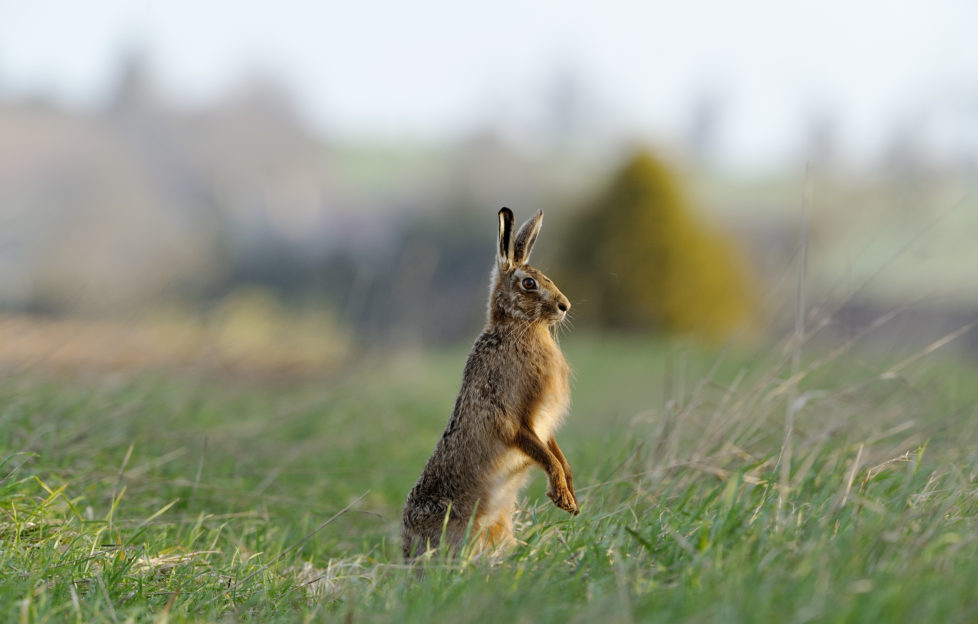
 Jim draws attention to the Fox and Hare Bill, which was set out last year to rectify loopholes enabling mass shootings of native wildlife…
Jim draws attention to the Fox and Hare Bill, which was set out last year to rectify loopholes enabling mass shootings of native wildlife…
If you think Scotland’s foxes, mountain hares and brown hares are being killed for no good reason – and they are, in huge numbers – September 15, 2019 was your chance to say so. Too many farms and too many estates have been getting away with murder for far too long.
The Bill aimed to close loopholes in existing legislation, that permit mass-killing of brown and mountain hares and fail to prevent fox hunting. No reasonable human being would disagree with such an outcome.
Unfortunately, it is the worrying numbers of unreasonable human beings who tend to shout the loudest in this debate. Their zest for killing wild animals is exceeded in distastefulness only by the sinister nature of the rituals they cherish in the execution of their sport. Hare drives and fox hunting are grotesque.
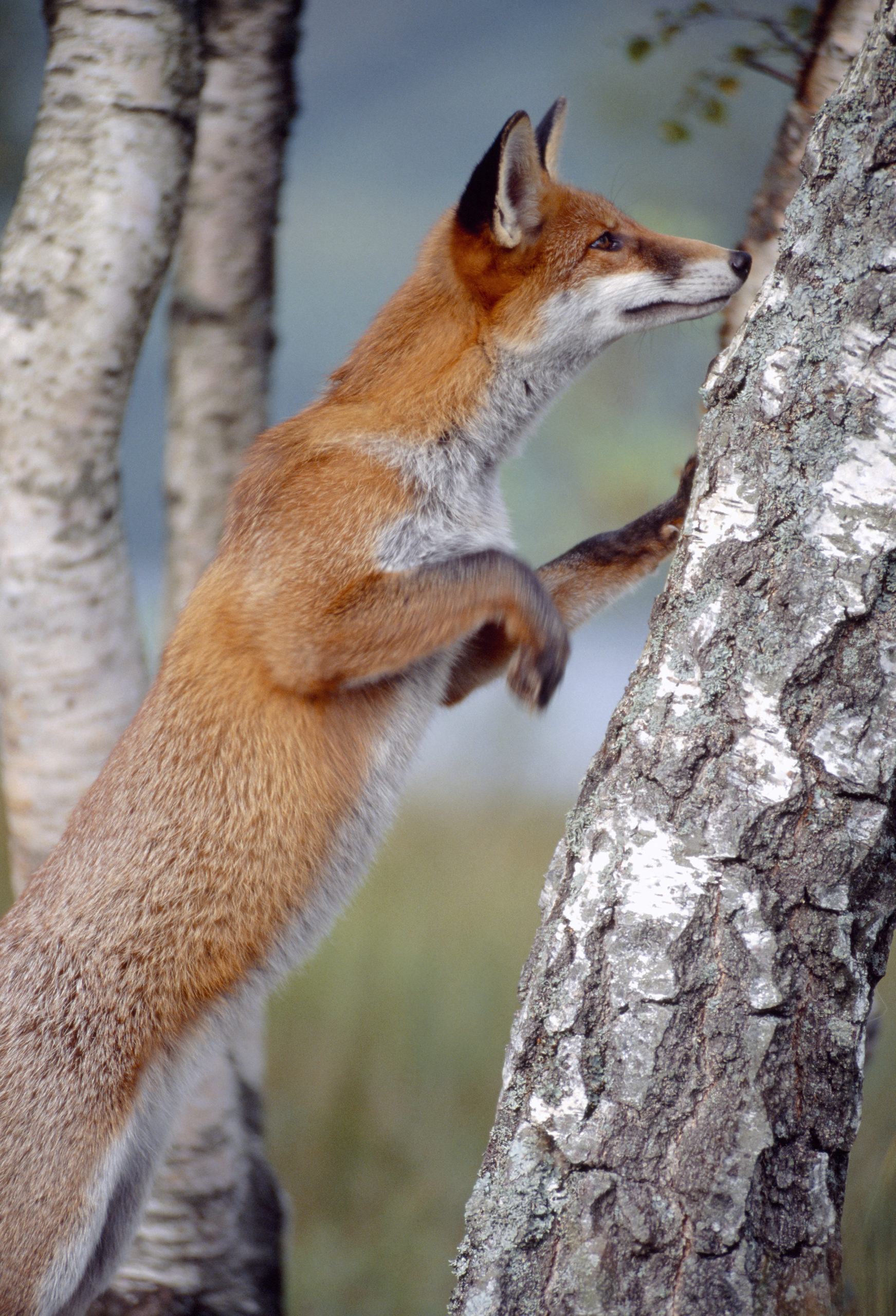
Red Fox (Vulpes vulpes) sub-adult, semi-habituated animal, Loch Lomond and the Trossachs National Park, Stirlingshire.
There is, of course, nothing new about them. Their 21st-century adherents mindlessly mimic rituals that predate the Victorians, although the Victorians entered into the spirit of it all with the same enthusiasm as they cleared the land of people they had no use for.
Now, exactly the same land management practices are employed by sporting estate landowners, land managers and keepers and by farmers. Only the justification has changed, now it is “good for the rural economy”. They believe that only they have the right to decide which creatures should be permitted to live and which must be killed, and the decision will be taken on the basis of which creatures they find inconvenient.
Both country people and townspeople have loathed that approach for centuries. Our two greatest poets in Scots and Gaelic, Robert Burns and Duncan Ban MacIntyre, both raged against it in
the 18th century.
Burns wrote To A Mouse in 1785, in which he apologised for breaking “nature’s social union”, perhaps the first utterance of conservation thinking. Four years later, in a letter Burns wrote, “while sowing in the fields, I heard a shot, and presently a poor little hare limped by me, apparently very much hurt… this set my humanity in tears.” The result was a poem: Verses On Seeing a Wounded Hare Limp By Me, Which a Fellow Had Just Shot At.
Inhuman man! curse on thy barbarous art,
And blasted be thy murder-aiming eye;
May never pity soothe thee with a sigh
Nor ever pleasure glad thy cruel heart!
Go, live, poor wanderer of the wood and field!
The bitter little that of life remains:
No more the thickening brakes and verdant plains
To thee shall home, or food, or pastime yield.
Seek, mangled wretch, some place of wonted rest,
No more of rest, but now thy dying bed!
The sheltering rushes whistling o’er thy head,
The cold earth with thy bloody bosom prest.
Oft as by the winding Nith, I musing, wait
The sober eve, or hail the cheerful dawn;
I’ll miss thee sporting o’er the dewy lawn,
And curse the ruffian’s aim, and
mourn thy hapless fate.
Inhuman man’s barbarous art has rendered evermore hapless the fate of both hare and fox ever since, and for that matter it has been exercising the minds of poets and nature writers ever since, too.
Back in the spring of 2016, the Scottish Government had just completed a consultation process for a review of existing legislation covering hunting with dogs, to determine whether that legislation provides “the necessary level of protection for foxes and other wild mammals while allowing effective and humane control of these animals where needed”.
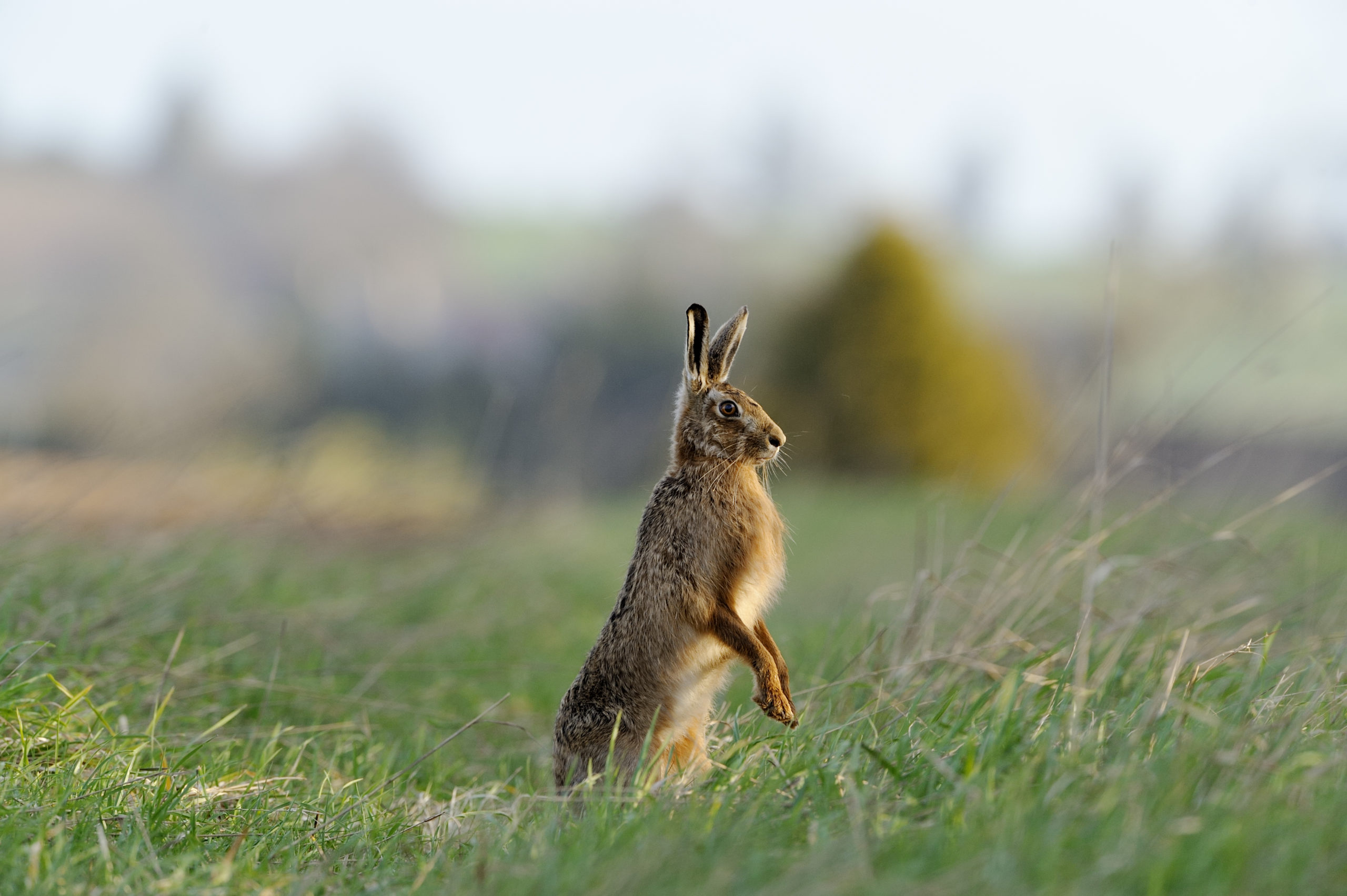
Brown Hare (Lepus europaeus)
In this magazine, I wrote then, “I don’t know what the going rate is among retired High Court judges to run a government inquiry, nor what it might cost to staff and process such an event and publish its report, but I fail to understand how the many thousands of pounds involved can be considered public money well spent. The Scottish Government environment minister Aileen McLeod was never going to ask me anyway, even though I could have spared her the expense of the review and told her what she wants to know for nothing (the answer is no, foxes are not being provided with the necessary level of protection), and I could also have explained why the review is asking the wrong questions and considering the wrong legislation.
“Lord Bonomy, I have no doubt at all, is supremely qualified to conduct a legal review, but the plight in which the red fox finds itself in the second decade of the 21st century is not one that can be resolved by a review of legislation governing hunting with dogs. I, on the other hand, have no qualifications of any kind, unless you consider half a lifetime as a kind of lone wolf for nature’s cause and criss-crossing and cross-examining the land and its wild creatures with a notebook in my hand to be a qualification.
“The review is an inappropriate mechanism because of its narrow remit, because of what it is not allowed to consider, and because it is hamstrung by having to give weight to that wretched subordinate clause: ‘…while allowing effective and humane control of these animals where needed’. The particular problems posed by that clause are these:
“1 – Hunting with dogs has nothing whatever to do with the control of foxes whether effective, humane or (inevitably) otherwise, and it never has had. Uncomfortably within living memory, several British hunts imported foxes from France to ensure there were enough to hunt. Fox hunting is a self-indulgent and preposterous game for self-styled countrymen who enjoy dressing up, behaving absurdly, riding recklessly, and watching foxes being killed by dogs. As a method of control, it is as effective as shooting midges with a water pistol.
“2 – Who decides when control is needed? And will it be anyone who understands the subtleties of the lifestyle of the red fox or gives a damn about it?
“3 – The review will not address the essential question: why should foxes be controlled at all? Demonstrably it does not work at any level. The estates that insist they have problems with foxes are also the ones that practise control. There is plenty of scientific evidence to support the theory that ‘controlling’ foxes actually increases the number of foxes on the ground because it disrupts the family structure. Estates that let wildlife manage wildlife have few if any problems with foxes. Foxes practice fox control themselves by restricting breeding whenever circumstances
demand it.
“So the issues the Scottish Government should be considering are these. Why should anyone pursuing nothing but self-interest, and with no regard for the consequences, have any say in deciding which wildlife species can live and which must die? The red fox is every bit as important, every bit as crucial to our biodiversity as say, an otter, a badger, a pine marten, or a wildcat, and all these are protected by law. Why is the red fox not given the same legal protection?
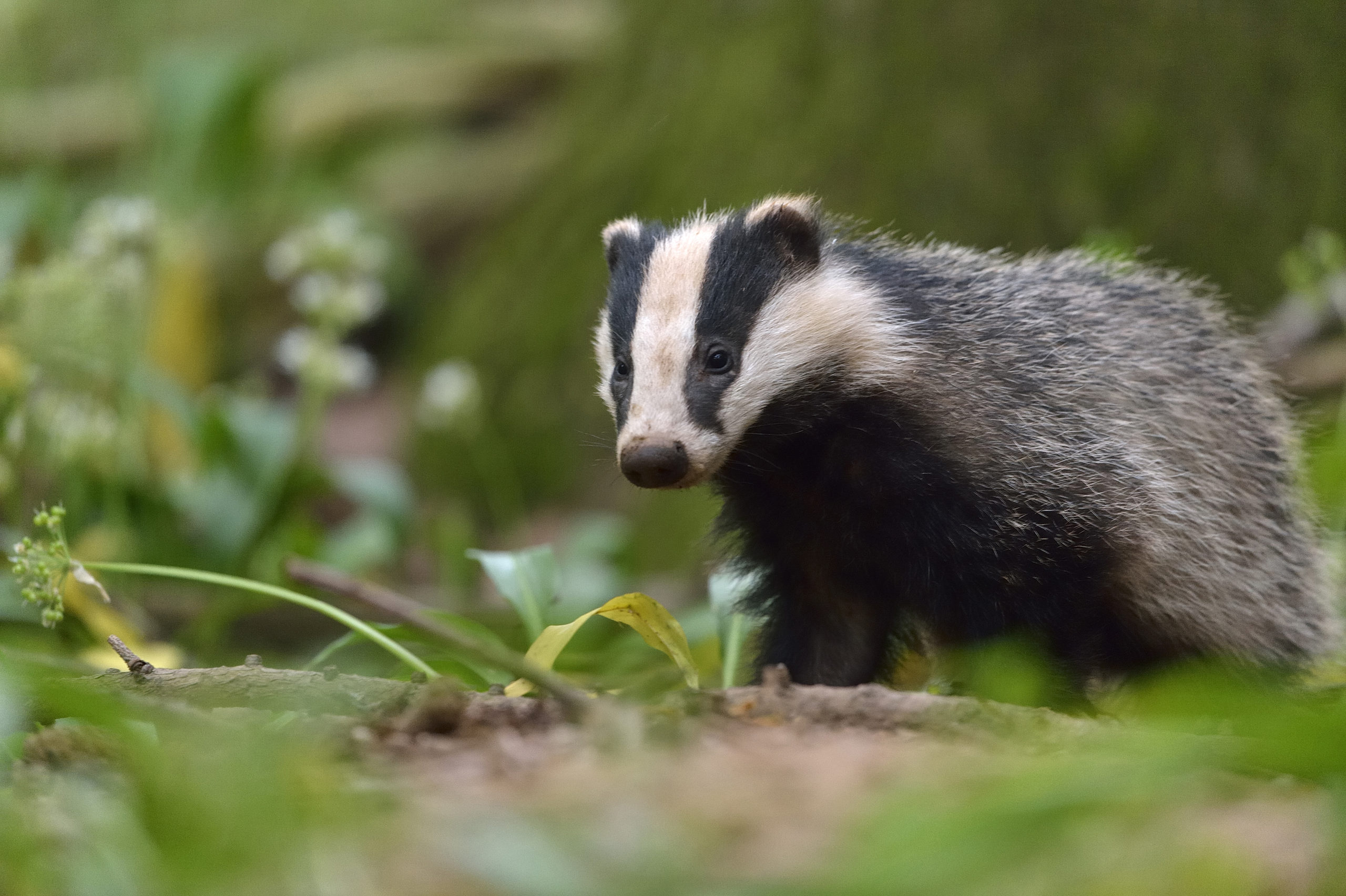
Badger. Pic credit: L.Campbell
“We profess to be a modern, civilised and compassionate nation with ambitions for independence. We profess to understand the worth of nature conservation, a global movement whose founding
father was a Scot, John Muir. Yet still we indulge the ‘right’ of a small number of people who exert influence over a huge area of the Scottish landscape to hunt foxes with dogs (and let’s not pretend it no longer happens), to shoot them, trap them, poison them and display their brushes on fences as evidence of good stewardship, or consign their carcases to stink pits. The red fox
deserves better.”
Alison Johnstone’s draft Bill was born out of frustration at the self-evident failure of the 2017 legislation that followed the review. All of the above is just as relevant
to the shooting of hares. Each is as reckless and wrong as the other.
In the particular case of the mountain hare, the justification for the mass shootings is that it carries a tick which can be harmful to red grouse. As the red grouse is the sacred cow of the Scottish
landowning hierarchy, this tick is the kiss of death to the mountain hare.
This, despite the fact that the mountain hare and the red grouse co-existed and thrived for thousands of years, and that co-existence has only become a problem since Scottish landowners invented the concept of the grouse moor.
Specifically, it is a problem because of the money grouse-shooting generates by persuading rich people with guns to shoot grouse for an exorbitant fee.
So before their clients can kill the grouse on their land, lots of other people with guns have to kill as many mountain hares as possible. It is very difficult indeed, if you have witnessed such a killing spree, to avoid the impression that what is actually going on is a group of men killing hares because they enjoy killing hares.
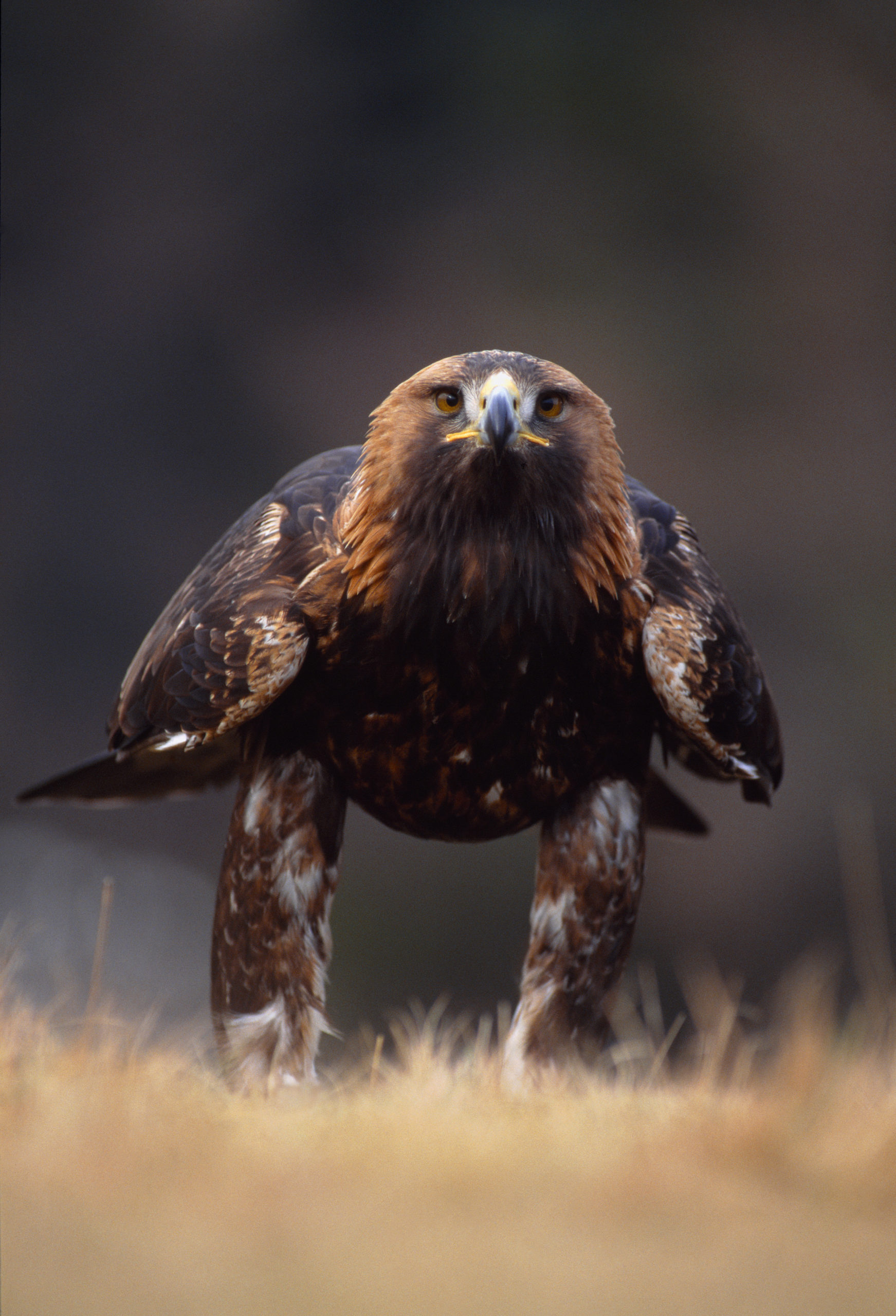
Golden Eagle (Aquila chrysaetos). Pic credit: L.Campbell.
This frankly grotesque exercise, like the killing of foxes, like the killing of eagles, hen harriers, stoats, weasels, and anything else that so much as looks sideways at a red grouse, has become routine practice, whether whatever is killed is legally protected or not. And the imminent extinction of the Scottish wildcat is one more direct consequence of centuries of killing.
As things stand, the penalties are far from adequate, and the crimes are often difficult to prove because of the nature of the terrain where they are committed.
Perhaps when a landowner is jailed, things will begin to change. Meanwhile, Ms Johnstone’s draft Bill is a step in the right direction. If it becomes law, it might serve as a signal to organisations like Scottish Land and Estates and the Scottish Gamekeepers Association of which way the wind is blowing.
Scottish Land and Estates, the landowners’ organisation, will have you believe that it is “caring for landscapes, habitats and wildlife”. It says so on their website. The Scottish Gamekeepers Association will have you believe that it “promotes best practice in gamekeeping highlighting the significant contribution our members make to Scotland’s economy, environment, biodiversity and larder”.
Yet they rage against every reintroduction of species that belong here and which their predecessors wiped out. And in the grouse moor and the deer forest their members sustain two of the most artificially contrived landscapes imaginable, in which habitats and wildlife are routinely trashed and burned, and the land rendered bare and treeless, and the unwanted corpses of inconvenient wildlife are consigned to the indignity of the stink pit.
Legal protection for mountain hares, legal protection for foxes – which by definition would outlaw fox hunting – and while we’re at it, shouldn’t we be considering legal protection for the red grouse?
“Inhuman man! Curse on thy barbarous art…”
It is a sentiment no less appropriate for 2019 than it was in 1789.
You can read more of Jim Crumley’s Scottish wildlife columns online here, and each month in The Scots Magazine.
Subscribe to The Scots Magazine today for more from Jim Crumley >>



